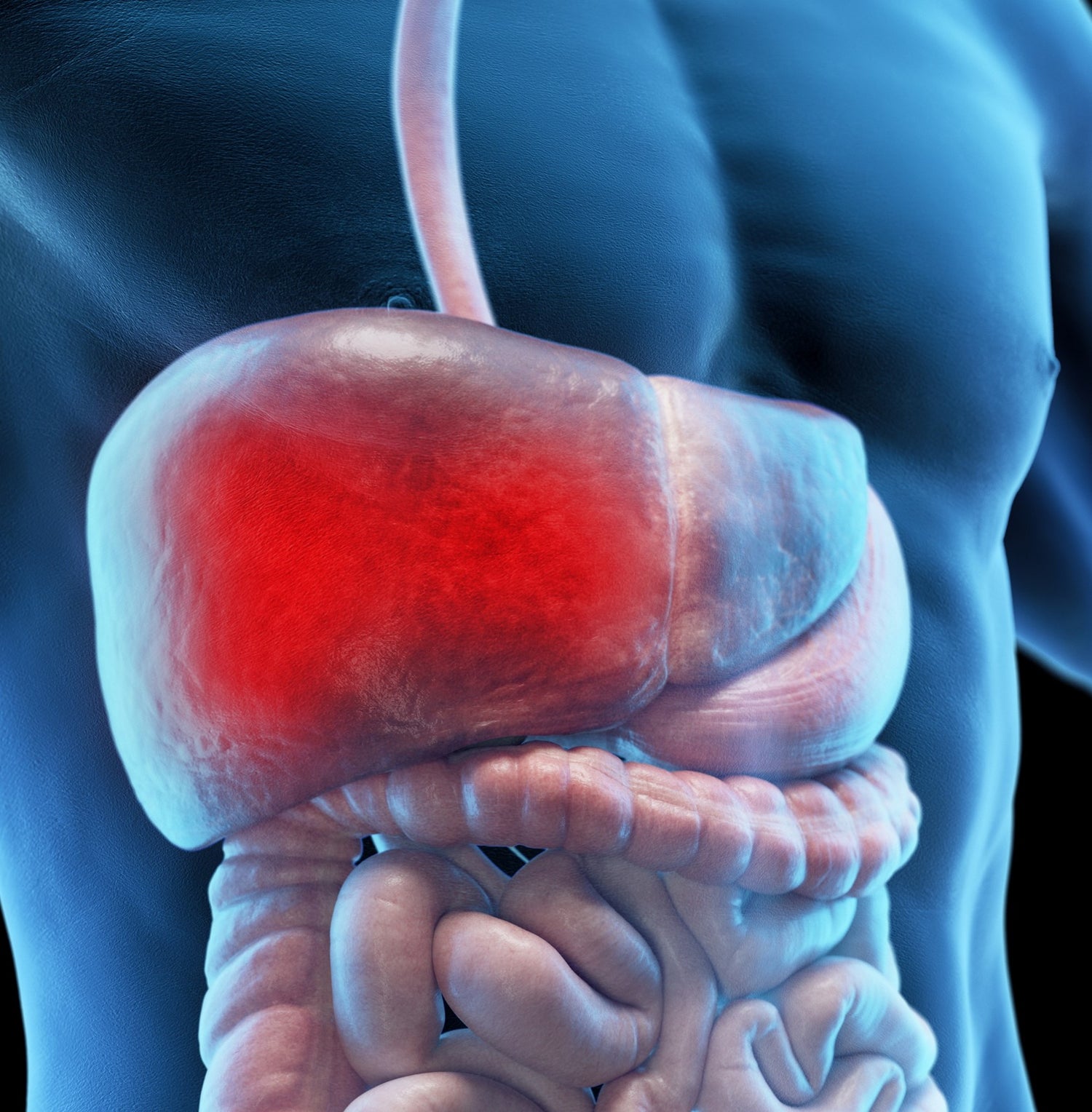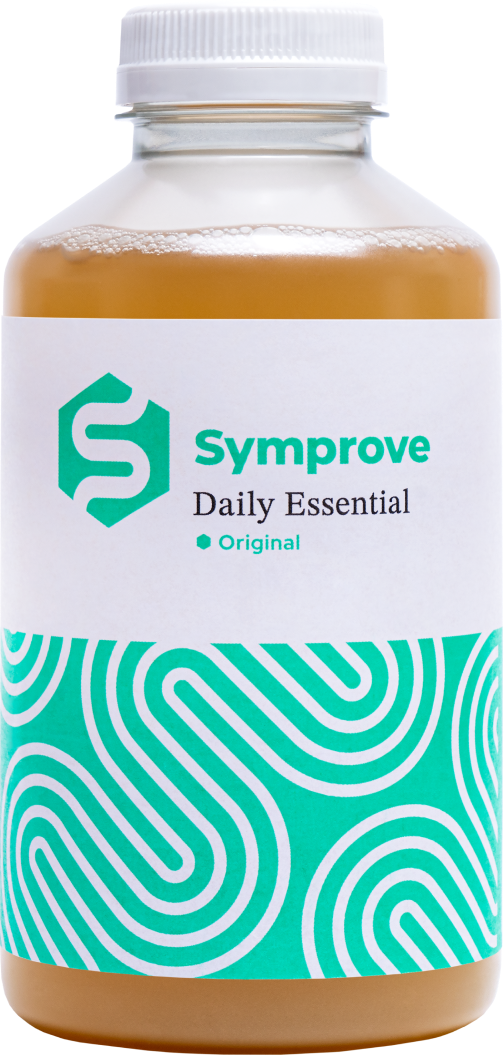There is an evolving crisis of chronic liver disease in the UK, which is the only major chronic disease with increasing mortality rates. Cirrhosis is currently the second leading cause of death and loss of working life years behind self-harm in young people (1). Cirrhosis is defined by key histological features that are the result of the culmination of often years of hepatic inflammation triggered by insults such as alcohol, viral hepatitis infection or fatty infiltration as the main causes, leading to fibrotic transformation of the liver. Cirrhosis can be complicated by episodic decompensation characterised by the occurrence of jaundice, synthetic failure, varices, ascites, encephalopathy or hepatocellular carcinoma (2).
Treatment options become increasingly limited the more advanced the stage of cirrhosis with orthotopic liver transplantation being a radical intervention to which relatively few have adequate access, and for which many are unsuitable. The primary prevention of cirrhosis is highly desirable, with the need to develop robust, sensitive, and non-invasive tests - including biomarkers - to facilitate this, in addition to more efficacious, non-transplantation dependent therapies.
One of the cornerstones of therapies for both the acute treatment of complications of cirrhosis, as well as prevention of recurrence of complication, are absorbable and non-absorbable antibiotics. The relentless rise in emergence of multi-drug resistant organisms in cirrhosis is of worldwide concern (3). Restricting the inappropriate use of antibiotics, which are widely used to treat the complications of cirrhosis is particularly difficult given the known increased susceptibility to infection because of deranged immune function and challenges around diagnostics (4, 5). Acute infections are often the immediate cause of hospitalisation of cirrhosis patients and their subsequent death. Long-term antibiotic prophylaxis is recommended in certain situations such a spontaneous bacterial peritonitis (6) and hepatic encephalopathy (HE), which further compounds the risk of developing antimicrobial resistance.
Given that changes in the gut microbiome increasingly appear to be causal in propagating liver damage as well as life-threatening complications in cirrhosis, the microbiome is attractive as a therapeutically modifiable target (7, 8). Below, we will outline some of the key current and prospective treatments for modulating the gut microbiome in chronic liver disease (see Figure 1), noting that there are other microbial niches that are also relevant such as the oral microbiome that are not addressed here.
Figure 1. Potential therapeutic targets in the gut-liver axis in cirrhosis (figure originating from (9))
Diet
Preclinical and clinical studies have proven the interaction between diet and the microbiome. The food we consume acts as a substrate for the microbiome to metabolise with key nutrients being made available to the human host and dependent on this interaction. Diet remains a critical intervention in cirrhosis and, for example, in patients with advanced chronic liver disease from USA and Turkey, a diet rich in coffee, cereals, tea, vegetables, and fermented milk was associated with higher microbial diversity, and reduced the risk of hospitalization (10).
Probiotics
Probiotics are defined as live microorganisms which when administered in adequate amounts confer a health benefit to the host (11). Several small-scale randomised, placebo-controlled clinical trials have suggested benefits of probiotics in various liver diseases and particularly in steatotic liver disease (12) and HE (13), but with varying degrees of success largely due to inconsistent methodology in trial design and delivery. With the improvement of culture methods, next generation sequencing and bioinformatics, next-generation probiotics (NGP) have emerged, using species that differ from Lactobacillus or Bifidobacterium which were commonly used before (such as Akkermansia mucinophila). NGPs differ from traditional probiotics in how they are likely to be viewed by regulators and are more likely to include engineered bacteria (14). An oral administration of a genetically engineered Escherichia coli Nissle 1917 strain (SYNB1020) that metabolised ammonia and converted it to L-arginine in the gut of mice with thioacetamide-induced liver injury lowered the systemic levels of ammonia. Although preclinical models show benefit (15), the effect of these microbes in a clinical trial setting (‘SYNB1020’ clinicaltrials.gov ref: NCT03447730) has not been confirmed with the trial halted on basis of futility based on interim analyses demonstrating lack of efficacy.
A common shortcoming of probiotics is the lack of standardisation in trial design and choice of endpoints, necessitating further study. One avenue has been to investigate the impact of Symprove™ on the microbiome of cirrhosis patients using a sophisticated experimental model that simulates the anatomy and chemical conditions of the human gut. This proof-of-concept study revealed improvements in faecal microbiome composition, SCFA production, intestinal inflammation and epithelial wound healing (16) and provides the rationale for a clinical trial.
Prebiotics
Prebiotics are defined as a substrate that is selectively utilised by host microorganisms conferring a health benefit (11). Lactulose is a non-absorbable synthetic disaccharide made up of galactose and fructose and has been widely used to treat patients with HE for decades. Lactulose is metabolised in the large intestine by the microbiome into monosaccharides, and then to volatile fatty acids, hydrogen, and methane, and reduces intestinal ammonia production and absorption by several mechanisms which in turn alleviate HE symptoms.
Preclinical trials suggest that supplementation with prebiotics (inulin, fructo-oligosaccharides and pectin) may attenuate hepatic steatosis and liver injury in diet and ethanol-induced liver injury model (17). In addition to modifying the composition and function of gut microbiota, prebiotics are fermented by the gut microorganisms into SCFAs which aid intestinal barrier integrity (18).
Postbiotics
According to the most recent definition, postbiotics are a preparation of inanimate microorganisms and/or their components that confers a health benefit on the host (19). Preclinical trials using postbiotics prepared from Lactobacillus paracasei demonstrated benefits in insulin sensitivity and steatotic liver disease (20). There are no clinical trials to date testing SCFAs as postbiotics – which are crucial in maintaining gut barrier health - in patients with liver disease.
Bacteriophages
Phages are natural predators of bacteria and show promise in targeted therapeutic interventions (21). Altered phage composition in liver disease prompts exploration of their potential. Colonisation of mice with faecal microbiota from patients with alcohol-associated hepatitis containing cytolysin-positive E. faecalis resulted in exacerbation of liver disease; administration of phages that target cytolytic E. faecalis reversed liver disease progression (22). Challenges such as limited host range will likely be addressed by phage cocktails and genetic engineering (21).
Faecal microbiota transplantation
Faecal microbiota transplantation (FMT) is an FDA approved treatment for recurrent Clostridium difficile infection. In cirrhosis, positive results have been seen when used for the treatment of HE. A recent trial in the UK showed that FMT was safe and feasible in patient with stable advanced cirrhosis and (23) and currently a multicentre trial using encapsulated lyophilised FMT is underway. Patients with alcohol-associated hepatitis with ongoing alcohol consumption may benefit the most from these new treatments and a recent study reported that alcohol craving or consumption and long-term alcohol-related hospitalisations can potentially be reduced by FMT in patients with alcohol use disorders (24).
Challenges include the lack of standardisation and definition of ‘optimal’ composition of bacterial and other microbes, invasive methods of delivery requiring endoscopy unless FMT is encapsulated, concerns around risk of transmissible infections despite screening measures, and the lack of standardisation and large-scale treatment given that the substrate needs to be derived from heathy human donors with inherent variability. There have also been reports of bacteraemia due to the transmission of drug-resistant extended-spectrum beta-lactamase Escherichia coli in two independent FMT trials (25) where one patient died.
FXR agonists
After transformation into secondary bile acids, bile acids signal in the intestinal epithelium primarily via the farnesoid X receptor (FXR). The FXR is a nuclear receptor physiologically activated by bile acids and expressed at high levels in the liver and intestine. Beside regulating bile acid production and elimination, it also modulates liver glucose and triglyceride metabolism, making it an attractive target for steatotic liver disease, in particular.
Oral treatment with FXR agonists, (currently used to treat primary biliary cholangitis), have been shown to reduce translocation of viable bacteria from the intestine to the liver in mice with experiments cirrhosis by increasing expression of tight-junction proteins in epithelial cells and restoring the gut vascular barrier (26). There are multiple clinical trials underway. Some of the reported side effects have been a pro-atherogenic lipid profile, pruritus, and hepatocellular toxicity under certain conditions. Development of FXR ligands with tissue selectivity could minimize these adverse effects (27).
Non-selective beta-blockers (NSBB)
NSBB are widely used to treat or prevent variceal haemorrhage but their use and underlying mechanism for preventing other decompensation phenotypes is not elucidated. While reducing portal pressure is likely to prevent bleeding there are potential benefits linked to, or even independent, of the effect of portal pressure. These include reducing bacterial translocation from the gut into the portal system, which itself is associated with worsening liver failure and risk of sepsis-induced decompensation (28). Whether this is related to modifications of the underlying gut bacterial populations or in reducing bacterial translocation itself requires mechanistic exploration to optimise therapies. While observational studies suggest these links exist, the mechanistic role of beta-blockers in modulating these responses is poorly understood. This is currently being investigated as a biological sub-study to a large multicentre clinical trial underway (29).
Large, robustly designed, placebo-controlled, randomised trials are needed of the plethora of gut-microbiome targeting therapies that are available in patients with liver disease and cirrhosis. Some of these involve the repurposing of existing medications (e.g. NSBB) and probiotic approaches that are currently available to evaluate their efficacy, as well as the development of other targeted interventions. Future therapies including engineered bacteria, postbiotics and phages have been mostly tested in pre-clinical models and show potential in the treatment of chronic liver disease. It is likely that a more sophisticated, combinatorial approach will be required to fully harness the potential of these therapies, whilst dietary interventions will need to play a more central role.
Conflicts of Interest: VP has undertaken investigator-initiated work with Symprove Ltd. based on industry-collaboration that is referred to in this article.
References
1. Karlsen TH, Sheron N, Zelber-Sagi S, Carrieri P, Dusheiko G, Bugianesi E, et al. The EASL-Lancet Liver Commission: protecting the next generation of Europeans against liver disease complications and premature mortality. Lancet. 2022;399(10319):61-116.
2. Tsochatzis EA, Bosch J, Burroughs AK. Liver cirrhosis. Lancet. 2014;383(9930):1749-61.
3. Patel VC, Williams R. Antimicrobial resistance in chronic liver disease. Hepatol Int. 2019.
4. Shallcross L, O'Brien A. Antimicrobial resistance in liver disease: better diagnostics are needed. Lancet Gastroenterol Hepatol. 2017;2(3):151-3.
5. Barlow G. Clinical challenges in antimicrobial resistance. Nat Microbiol. 2018;3(3):258-60.
6. European Association for the Study of the Liver. EASL Clinical Practice Guidelines for the management of patients with decompensated cirrhosis. J Hepatol. 2018;69(2):406-60.
7. Albillos A, de Gottardi A, Rescigno M. The gut-liver axis in liver disease: Pathophysiological basis for therapy. J Hepatol. 2020;72(3):558-77.
8. Bajaj JS, Ng SC, Schnabl B. Promises of microbiome-based therapies. J Hepatol. 2022;76(6):1379-91.
9. Woodhouse C, Singanayagam A, Patel VC. Modulating the gut-liver axis and the pivotal role of the faecal microbiome in cirrhosis. Clin Med (Lond). 2020;20(5):493-500.
10. Bajaj JS, Idilman R, Mabudian L, Hood M, Fagan A, Turan D, et al. Diet affects gut microbiota and modulates hospitalization risk differentially in an international cirrhosis cohort. Hepatology. 2018;68(1):234-47.
11. Gibson GR, Hutkins R, Sanders ME, Prescott SL, Reimer RA, Salminen SJ, et al. Expert consensus document: The International Scientific Association for Probiotics and Prebiotics (ISAPP) consensus statement on the definition and scope of prebiotics. Nat Rev Gastroenterol Hepatol. 2017;14(8):491-502.
12. Rong L, Ch'ng D, Jia P, Tsoi KKF, Wong SH, Sung JJY. Use of probiotics, prebiotics, and synbiotics in non-alcoholic fatty liver disease: A systematic review and meta-analysis. J Gastroenterol Hepatol. 2023;38(10):1682-94.
13. Dalal R, McGee RG, Riordan SM, Webster AC. Probiotics for people with hepatic encephalopathy. Cochrane Database Syst Rev. 2017;2(2):CD008716.
14. O'Toole PW, Marchesi JR, Hill C. Next-generation probiotics: the spectrum from probiotics to live biotherapeutics. Nat Microbiol. 2017;2:17057.
15. Kurtz CB, Millet YA, Puurunen MK, Perreault M, Charbonneau MR, Isabella VM, et al. An engineered E. coli Nissle improves hyperammonemia and survival in mice and shows dose-dependent exposure in healthy humans. Sci Transl Med. 2019;11(475).
16. Moens F V-d-AP, Maxan M-E, Arefaine B, Said J, Basit AW, Gaisford S, Patel VC. P23 Influence of a multi-strain probiotic on gut microbiome modulation and metabolic function, epithelial tight junction integrity and intestinal inflammation utilising a multi-compartmental in-vitro gut model of decompensated cirrhosis. Gut 2022;71(Supplement 3):A47-A8.
17. Hsu CL, Schnabl B. The gut-liver axis and gut microbiota in health and liver disease. Nat Rev Microbiol. 2023;21(11):719-33.
18. Pohl K, Moodley P, Dhanda A. The effect of increasing intestinal short-chain fatty acid concentration on gut permeability and liver injury in the context of liver disease: A systematic review. J Gastroenterol Hepatol. 2022;37(8):1498-506.
19. Salminen S, Collado MC, Endo A, Hill C, Lebeer S, Quigley EMM, et al. The International Scientific Association of Probiotics and Prebiotics (ISAPP) consensus statement on the definition and scope of postbiotics. Nat Rev Gastroenterol Hepatol. 2021;18(9):649-67.
20. Pan Z, Mao B, Zhang Q, Tang X, Yang B, Zhao J, et al. Postbiotics Prepared Using Lactobacillus paracasei CCFM1224 Prevent Nonalcoholic Fatty Liver Disease by Modulating the Gut Microbiota and Liver Metabolism. Int J Mol Sci. 2022;23(21).
21. Emencheta SC, Olovo CV, Eze OC, Kalu CF, Berebon DP, Onuigbo EB, et al. The Role of Bacteriophages in the Gut Microbiota: Implications for Human Health. Pharmaceutics. 2023;15(10).
22. Duan Y, Young R, Schnabl B. Bacteriophages and their potential for treatment of gastrointestinal diseases. Nat Rev Gastroenterol Hepatol. 2022;19(2):135-44.
23. Woodhouse CA, Patel VC, Goldenberg S, Sanchez-Fueyo A, China L, O'Brien A, et al. PROFIT, a PROspective, randomised placebo controlled feasibility trial of Faecal mIcrobiota Transplantation in cirrhosis: study protocol for a single-blinded trial. BMJ Open. 2019;9(2):e023518.
24. Bajaj JS, Gavis EA, Fagan A, Wade JB, Thacker LR, Fuchs M, et al. A Randomized Clinical Trial of Fecal Microbiota Transplant for Alcohol Use Disorder. Hepatology. 2021;73(5):1688-700.
25. DeFilipp Z, Bloom PP, Torres Soto M, Mansour MK, Sater MRA, Huntley MH, et al. Drug-Resistant E. coli Bacteremia Transmitted by Fecal Microbiota Transplant. N Engl J Med. 2019;381(21):2043-50.
26. Sorribas M, Jakob MO, Yilmaz B, Li H, Stutz D, Noser Y, et al. FXR modulates the gut-vascular barrier by regulating the entry sites for bacterial translocation in experimental cirrhosis. J Hepatol. 2019;71(6):1126-40.
27. Sun L, Cai J, Gonzalez FJ. The role of farnesoid X receptor in metabolic diseases, and gastrointestinal and liver cancer. Nat Rev Gastroenterol Hepatol. 2021;18(5):335-47.
28. Villanueva C, Albillos A, Genesca J, Garcia-Pagan JC, Calleja JL, Aracil C, et al. beta blockers to prevent decompensation of cirrhosis in patients with clinically significant portal hypertension (PREDESCI): a randomised, double-blind, placebo-controlled, multicentre trial. Lancet. 2019;393(10181):1597-608.
29. Patel VC, McPhail MJ, Uddin R, Jafari H, Lawrence V, Boutillier CL, et al. Beta-blockers or Placebo for Primary Prophylaxis (BOPPP) of oesophageal varices: Study protocol for a randomised controlled trial. medRxiv. 2023:2023.12.21.23300362.




